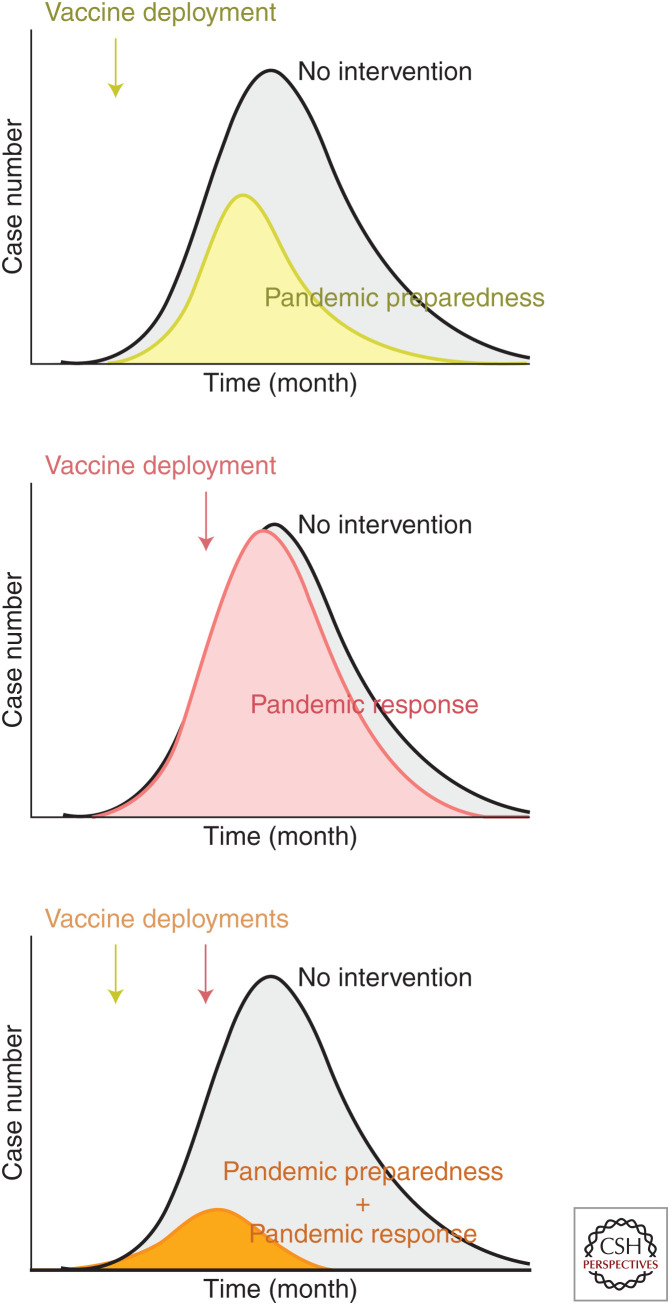Figure 3.
Potential scenario of an influenza pandemic with different countermeasure options. In the case of an influenza pandemic caused by a new virus with no antigenically matched stockpile vaccines, vaccines for pandemic preparedness and for pandemic response or a combination of the two vaccines could make a substantial impact on the epidemic curve and reduce the cumulative health burden. Vaccines for pandemic preparedness could be deployed as soon as the outbreak spreads locally and is recognized to be caused by a pandemic strain, so medical providers and at-risk population can be immunized before the pandemic peaks (top). Although vaccine efficacy for this type of vaccine may not be optimal, it will provide time for mass production of strain-matched vaccines (pandemic response). Relying on deployment of strain-matched vaccines alone as a pandemic response may not be sufficient as it may not be feasible to produce enough doses in time to substantially impact the epidemic (middle). This situation will be mitigated as newer technologies for rapid vaccine production such as mRNA-based modalities become available. Sequential deployment of vaccines for pandemic preparedness and pandemic response would be ideal to contain pandemic with minimum burden taking into account the importance of both speed and specificity (bottom).

